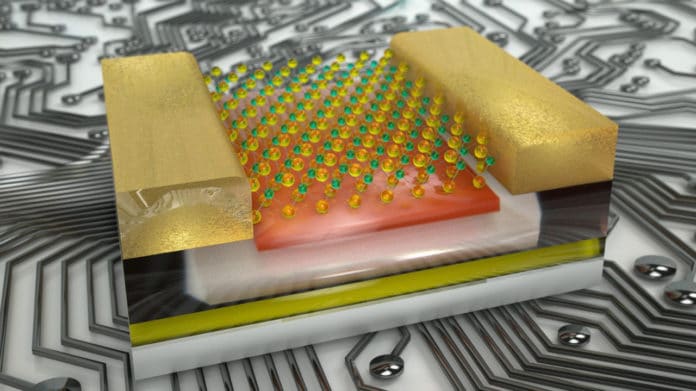A new technology developed by engineers at EPFL’s Laboratory of Nanoscale Electronics and Structures (LANES) is the first to use a 2D material for a logic-in-memory architecture or a single architecture that combines logic operations with a memory function. Engineers have developed a next-generation circuit that combines two functions – logic operations and data storage – into a single architecture, paving the way to more efficient devices.
Two-dimensional materials such as semiconducting molybdenum disulphide, MoS2, could be promising candidates, thanks to their exceptional electrical and mechanical properties.
Engineers developed this computer chip using MoS2. It is based on floating-gate field-effect transistors (FGFETs). These transistors can hold electric charges for long periods.
The unique electrical proprieties of MoS2 make it particularly sensitive to charges stored in FGFETs, which enabled the LANES engineers to develop circuits that work as both memory storage units and programmable transistors. Using MoS2, they were able to incorporate numerous processing functions into a single circuit and then change them as desired.
Andras Kis, the head of LANES said, “This ability for circuits to perform two functions is similar to how the human brain works, where neurons are involved in both storing memories and conducting mental calculations. Our circuit design has several advantages. It can reduce the energy loss associated with transferring data between memory units and processors, cut the amount of time needed for computing operations, and shrink the required amount of space. That opens the door to devices that are smaller, more powerful, and more energy-efficient.”
Other co-authors of the study include Guilherme Migliato Marega, Yanfei Zhao, Ahmet Avsar, Zhenyu Wang, Mukesh Tripathi, Aleksandra Radenovic, Andras Kis.
Journal Reference:
- Migliato Marega, G., Zhao, Y., Avsar, A. et al. Logic-in-memory based on an atomically thin semiconductor. Nature 587, 72–77 (2020). DOI: 10.1038/s41586-020-2861-0
